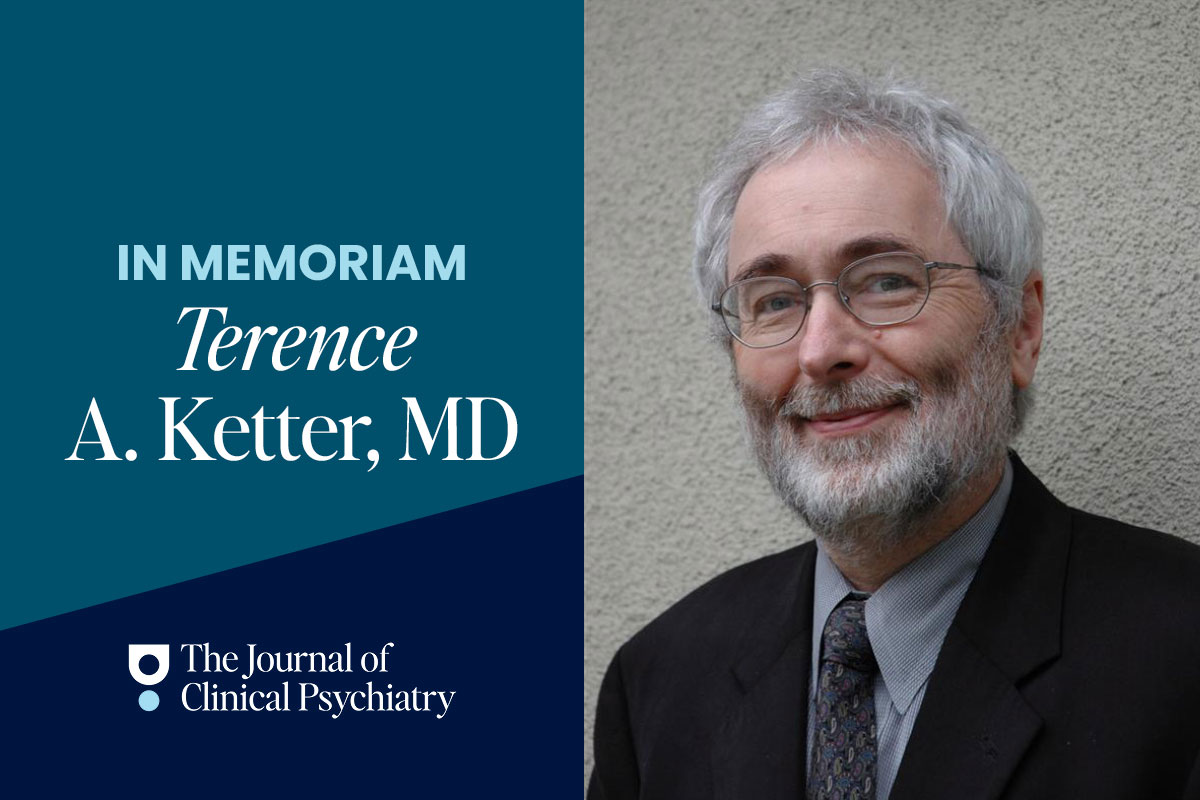
Terence A. Ketter, MD, died on November 1, 2024, at the age of 74 of a neurological disorder from which he had suffered for four years. He was Professor of Psychiatry at Stanford University School of Medicine from 2000 to 2017, when he retired. Terry was the Founding Director of the Stanford Bipolar Disorders Program, where he continued the seminal work in the biology and treatment of this difficult disorder that he initiated working under Robert Post, Chief of the Biological Psychiatry Branch at the National Institute of Mental Health (NIMH).
He earned his MD at the University of Toronto and a master’s in mathematics from the University of Sydney in Australia. He did his residency in Psychiatry at University of California San Francisco before doing postdoctoral training at the NIMH, where he remained on the staff for a total of 10 years before joining the faculty at Stanford University.
He was a “triple threat” professor: a terrific clinician, superb investigator, and gifted teacher and mentor. His patients would attest to his great ability to combine his sense of caring with his encyclopedic knowledge of the disorder to impart terrific and intelligible care of his patients. As an investigator, he was creative in his research. An example was his approach to designing and performing comparative trials and using a then-novel number needed to treat (NNT) approach to comparing drugs across multiple trials. A caring mentor, he trained a host of superb clinician scientists who have gone on to great success at Stanford and other institutions in the US and abroad.
Under Robert Post at the NIMH, Dr Ketter led the clinical research unit for approximately 10 years. There he was seen as an amazing clinician, scientist, and friend. He was calm, generous, technically and mathematically skilled, and innovative, using novel clinical designs. He not only found new treatments but conducted brain imaging studies with the goal of helping to predict clinical response. For example, his PET imaging studies of the novel anticonvulsant carbamazepine found that antidepressant responders had at baseline increased metabolism—a hot brain—maximal in the left insula. Conversely, he found that the antidepressant responders to the calcium channel blocker nimodipine had a cool brain and response was inversely correlated with activity in the left insula. Other research efforts aimed at finding new treatment approaches to the most difficult to treat patients. He studied pharmacokinetics; his work included novel off-on-off-on designs that revealed the efficacy of nimodipine and the superiority of the anticonvulsant lamotrigine over both gabapentin and placebo; novel combination approaches such as combining carbamazepine with valproate when either agent alone was ineffective; and brain imaging studies showing that the local anesthetic procaine selectively activated the limbic system and lit up a unique part in those who had visual hallucinations.
He advocated for earlier and more frequent use of lithium and the use of complex combination therapy for those with treatment refractory illness. He was extraordinarily productive and authored nearly 100 scientific manuscripts while at the NIMH and was a key player in the bipolar disorder group, recognized in the winning of more than 20 national and international clinical research awards. His caring for others, patients and staff alike, makes him a unique figure in the field and only amplifies his status as one of the most productive and influential clinical scientists of our time. It is an honor to have known and worked with this wonderful physician and man.
As the first Director of the Stanford Bipolar Program, he developed a cutting-edge program in clinical care that attracted patients and trainees from around the globe. At Stanford, Terry continued his research, participating in key treatment trials and multicenter genetics studies. He published over 400 papers and two textbooks in total and developed an international reputation as a leader in bipolar disorder research. He pioneered in understanding the relationship of bipolar disorder to creativity. His patients at Stanford adored him. They appreciated his kindness, dedication, and clinical skills. His trainees adored his investment in their development and his wry sense of humor. He was the first National Network of Depression Centers Board of Directors member from Stanford, and he represented the department until he retired.
Terry loved to travel, and in his retirement, he and his wife Nzeera Ketter, MD, traveled extensively to all continents. Other interests included their pet dogs and fine arts.
Published online: August 18, 2025
J Clin Psychiatry 2025;86(3):25f16060
To share: https://doi.org/10.4088/JCP.25f16060
© 2025 Physicians Postgraduate Press, Inc.
This PDF is free for all visitors!





